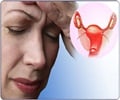How obesity affects the relationship between menopausal age and the future risk of developing heart failure is investigated in a new study.

‘The detrimental effects of obesity on heart failure risk were greatest among women who experienced late menopause.’





While women’s body produces less estrogen and progesterone after menopause, changes that can increase the risk for cardiovascular diseases including heart failure.In the National Health and Nutrition Examination Survey (NHANES), 1959-2018 – surveys providing nationally representative estimates of the United States – the prevalence of early menopause (before age 45) was 12.6% and late menopause (after age 55) was 14.2%.
Previous research has found that women who experience early menopause are at heightened risk of heart failure. Heart failure is diagnosed when the heart is unable to pump sufficient blood and oxygen to allow the body organs to function well.
“There is a gap in knowledge about the possible influence of late menopause occurring at age 55 or older on the incidence of heart failure,” according to lead study author Imo A. Ebong, M.D., M.S., an associate professor of medicine in the division of cardiovascular medicine at the University of California Davis, in Sacramento, California.
To overcome this, investigators analyzed health data for nearly 4,500 postmenopausal women participating in the Atherosclerosis Risk in Communities (ARIC) Study.
Advertisement
Among many baseline measurements and assessments conducted at the fourth follow-up exam, the women provided their age at menopause, and their weight was measured.
Advertisement
The heart failure risk potentially attributed to obesity as measured by BMI or waist circumference was calculated after adjusting for multiple other health and lifestyle risk factors for heart disease, including other conditions such as Type 1 or Type 2 diabetes, hypertension (or high blood pressure), kidney function, inflammation, left ventricular hypertrophy and prior heart attack.
During an average follow-up of 16.5 years, about 900 of the women had developed heart failure that resulted in either hospitalization or death.
For every six-point increase in BMI the risk of developing heart failure increased by 39% for the women in the menopause-before-age-45 group; 33% for those in the age 45-49 group; and doubled (2.02 times higher) in women in the late menopause group (age 55 or older).
Higher BMI was not associated with increased heart failure risk in women who reached menopause between the ages 50-and 54.
For every 6-inch increase in waist circumference, the risk of developing heart failure almost tripled (2.93 times higher) among the women who entered menopause at age 55 years or older.
Waist circumference did not significantly raise the risk of heart failure for women in any of the other menopausal age groups.
The information from the study may be helpful when screening for heart failure and counseling postmenopausal women about heart failure prevention.
The current study is limited because it did not include enough women to analyze separately for different types of heart failure. Future studies should be repeated according to heart failure subtypes, preserved and reduced ejection fraction heart failure, to more clearly understand heart failure risk estimation and guide screening and prevention programs.
Source-Medindia















